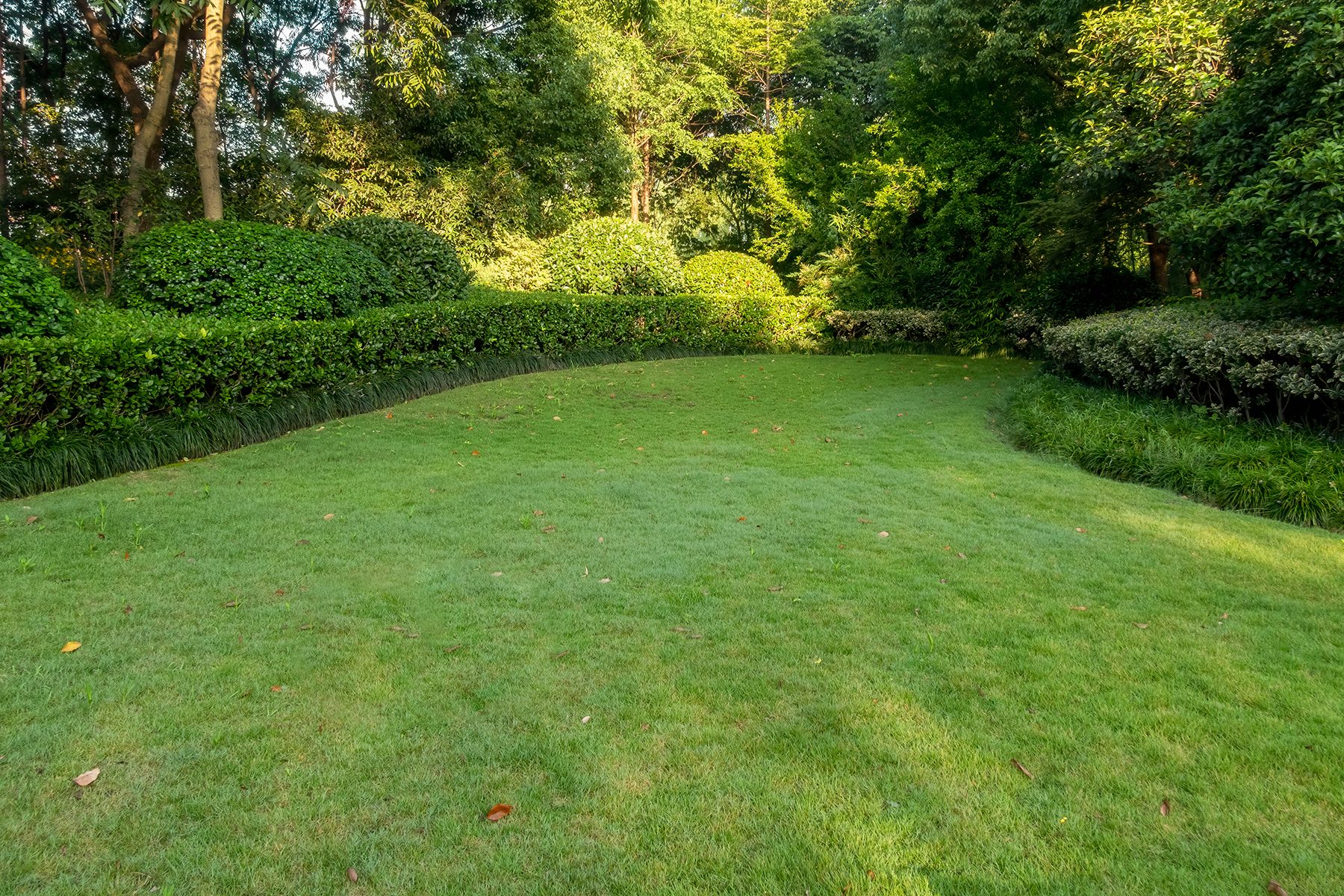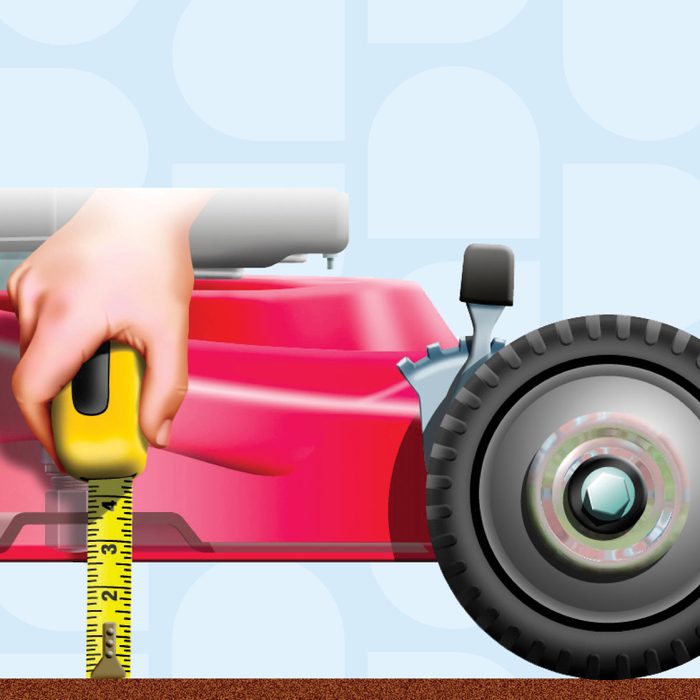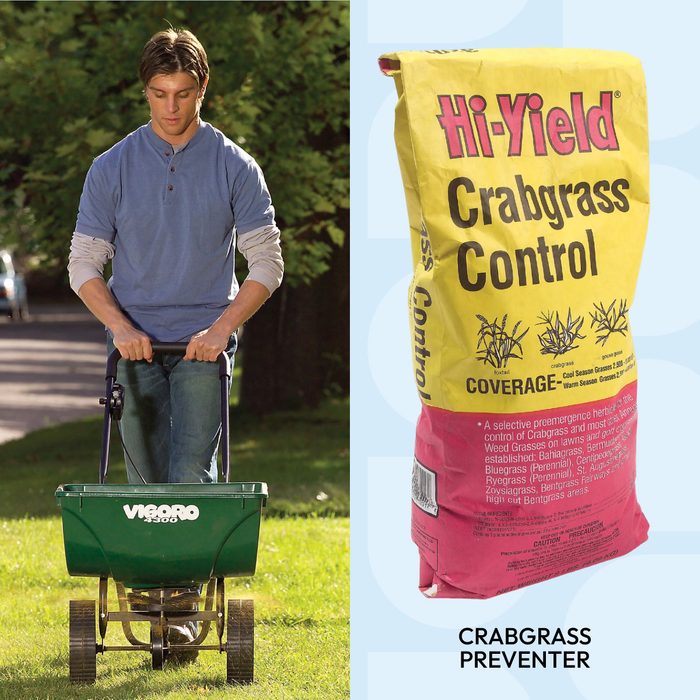Don't let the weeds overtake your yard.

Get Rid of Lawn Weeds For Good With These 12 Tips


Set Your Blade at the Right Height to Control Weeds
Cutting grass too short weakens it. Longer grass grows stronger and thicker and crowds out weeds. Weed seeds can’t germinate easily since they don’t get much light. Established weeds have a tougher time competing with the surrounding turf.
Each type of grass has an ideal mowing height to maintain its health and thickness. It’s about 2-1/2 in. for most cold-climate species. Cut most warm-climate grasses a bit shorter: 1-1/2 to 2 in. If you’re not sure of your grass type, take a sample to a local nursery. Or type ‘identify grass’ into an online search engine for help. Although most lawns contain a mix of grass types, they should have similar ideal cutting heights.

Plant Hardy Ground Covers in Shady Areas
Grass is a sun-loving plant. It typically needs six to eight hours of sunlight daily for good health. While several shade-tolerant species may do OK under trees and in other sheltered spots, it’s more likely that you’ll end up with weeds, scraggly grass and bare ground. It’s much better to plant a shade garden or a shade-tolerant ground cover that in a few years will blanket the area like a green carpet. And you won’t have to mow. A local nursery expert will advise you on which plants and ground covers do best in your region.

Don’t Fight Weeds Where Grass Won’t Grow
Poor light or soil conditions can make it all but impossible to grow grass in some areas. If you’ve tried more than once to nurture grass in an area and failed, it might be time to throw in the towel and treat the area with a landscaping alternative. The obvious choices are stone, mulch and attractive ground cover plants that tolerate the conditions grass can’t handle. Kill any weeds with a nonselective herbicide (re-treat survivors after 10 days). The herbicide will break down within two weeks and the ground will be safe for new plants.

Use Landscape Fabric Staples to Anchor the Seams
The seams in landscape fabric in planting beds often open between sections. To solve the problem, use landscape fabric staples. You’ll find them right next to the fabric in stores. Make sure the edges of the fabric overlap by at least 3 inches. And don’t skimp on the staples; place them about 16 in. apart. Also use staples to anchor landscape fabric around the perimeter. In hard soil, start the staples by hand and then push them in with your foot.

Treat Weed Patches With a Small Tank Sprayer
Patches or clumps of weeds are best treated with a standard 1- or 2-gallon tank sprayer. After spraying, triple-rinse the tank with water. With each rinse, pump up some pressure and flush out the wand, too.

Use a Dial Sprayer When Weeds Are Out of Control
If your whole lawn is filled with weeds, a dial sprayer attached to your garden hose is the answer. It’s fast and efficient. It’s just a matter of adding concentrated broadleaf killer to the pot, and setting the dial at the top to the mixture called for on the herbicide container—for example, 2-1/2 tablespoons per gallon of water. Then hook up the garden hose and apply an even treatment to the weedy areas.
Clear the yard of toys, furniture and anything else that can get contaminated by overspray. And be sure to protect your flowers and bushes with plastic sheeting or cardboard. Remember that broadleaf killers will kill or harm anything with leaves—including your flower bed.

Identify Weeds Before Planning the Attack
Before you start any weed control program, you need to determine which of the three types of weeds you’re controlling. Broadleaf weeds like creeping charlie have leaves, perennial grassy weeds like quack grass spread through roots and seeds, and annual grassy weeds like crab grass reseed themselves at the end of each growing season and germinate in the spring.
Each requires unique products and application methods. Some treatments are very time sensitive, while others can be done anytime during the growing season.

Prevent Crabgrass With a Pre-emergent Herbicide
The easiest way to get rid of crabgrass is to nail it before it starts growing. Apply a preemergent herbicide after your second mowing in the spring. Crabgrass grows from seeds scattered in previous years. The herbicide keeps those seeds from germinating. The seeds may remain viable for several years, so it’s best to apply herbicide every spring. One springtime application will vastly reduce the need to attack crabgrass later in the year once it has sprouted.
Pre-emergent herbicides are typically safe for pets and people, but be sure to follow the instructions carefully when applying it.

Killing Broadleaf Weeds
A broadleaf weed is any undesirable lawn plant that isn’t a grass. Dandelions, plantain, ground ivy (creeping charlie) and ragweed are a few of the most common broadleaf weeds. Before broadleaf weeds start growing in the spring, apply a pre-emergent herbicide.
It kills weeds before they sprout from seed and even kills some weeds that have just started to grow. Park your broadcast spreader over a tarp or on the driveway (grains may leak out, and a heavy dose of herbicide on the yard can kill even healthy grass). Fill the spreader and distribute the herbicide evenly over your lawn between your first and third mowings in the spring.
Dealing with late season broadleaf weeds
If a few broadleaf weeds pop up in the yard (you can always count on a few dandelions), spot-kill them with a post-emergence herbicide. Look on the label for “broadleaf killer” then check to see which weeds it targets. Some broadleaf herbicides also kill crabgrass. There’s no need to treat the entire lawn, just the weedy areas.

Killing Annual Grassy Weeds
Annual grassy weeds sprout from seed each year. The weed dies in the fall, leaving behind seeds that germinate the following spring. Crabgrass is the most notorious grassy weed, but there are others, like yellow foxtail and nutgrass. Use a pre-emergent herbicide to kill annual grassy weed seeds in the spring before they germinate.
Crabgrass preventer is the most common, but you might as well apply an herbicide containing Dimension in the spring because it also kills broadleaf weed seeds. Crabgrass often thrives along sidewalks and driveways because the ground is warmer there, so be sure to apply herbicide in those areas.
Killing late season grassy weeds
The best way to handle a few scattered annual grassy weeds is to spot-kill them with a post-emergence herbicide that’s formulated for grassy weeds. Mix the concentrated herbicide with water (per manufacturer’s directions), then pour the mixture into a handheld sprayer.
Spray the individual patches of weeds. To ensure that there’s plenty of plant material to absorb the weed killer, don’t mow the weeds just before applying the herbicide or for three days after. Always read the herbicide’s label before applying to make sure it will kill the targeted weeds and not harm your lawn.

Kill Perennial Grassy Weeds: Too Late
Once there are too many weeds to spot-treat by hand, it’s time for draconian measures. Kill everything and start over. Spray a nonselective herbicide on the weedy area and wait two weeks. If they’re not dead, spray them again. Once the weeds are dead, mow them as short as possible. After spraying the herbicide, wait 14 days to plant new grass so the herbicide won’t kill it.

Killing Perennial Grassy Weeds One By One
Quackgrass is a perennial grass that returns year after year. It spreads through seeds and extensive underground root systems and is unaffected by broadleaf killers.
You can pull it by hand, or with a garden spade or weeding tool, but you’ll have to get it before it has the chance to establish itself. You can also try killing it with heat, either using a flame weeder or by covering the area with plastic sheeting, leaving it to bake for a week under the hot summer sun.
Non-selective herbicides will work, too, but there are additional safety considerations to take into account with those products. Plus, those products have been banned in some communities.

Frequently Asked Questions
Will mulch stop weeds?
Mulch won’t stop weeds completely. Applied deep enough, it will prevent many weed seeds already in the soil from germinating and growing. But it won’t stop weeds that have already rooted. Tough weeds like dandelions will push right through if you don’t dig them out first. And more weed seeds will blow in and take root in the mulch (in both organic and stone). All mulch-covered gardens require maintenance, though less than if you don’t use mulch.
How thick should I apply organic mulch?
A layer of mulch 3 to 4 in. deep will keep most weed seeds in the soil from sprouting and increase moisture retention. However, more isn’t always better. Limit the depth to 5 to 6 in., especially around shallow-rooted plants. And pull back mulch from the base of plants so it doesn’t cause rot.
If you want to use organic mulch on slopes, apply a shredded type about 6 in. deep. It’ll mat together and stay in place better than a thinner layer.
Should I use landscape fabric under mulch?
Don’t use fabric under organic mulches. It’s better to let them decompose and mix into the soil. Use fabric only under stones and gravel. It’ll keep the rocks from sinking into the soil and make removal much easier if you want to change it later. The fabric will also slow down weeds that have rooted in the soil. Choose a fabric that allows water and air to pass through. Avoid using impermeable plastic, especially if you have trees, shrubs or other plants nearby.
Unfortunately, landscape fabric also makes weeding extremely difficult; you can’t get a shovel down through the rock and fabric. And it’s tough to pull weeds that root into the fabric.




















